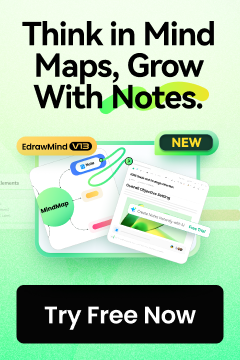Adidas has established itself as a global leader in the sportswear industry with its high-quality designs, high-performance products, and b brand presence. But what makes Adidas so effective in reaching its audience and staying ahead of the competition?
This article will discuss the secret to Adidas’ segmentation, targeting, and positioning (STP) strategy. By knowing the different customer groups and their products and marketing to match their needs, Adidas reaches a broad audience. In this article, we’ll look at how Adidas divides its market, chooses its ideal customers, and builds its reputation.
In this article
Adidas Segmentation, Targeting, and Positioning
Segmentation, targeting, and positioning (STP) is a marketing strategy that helps brands understand their audience, focus on the right customers, and create a b identity. Segmentation means dividing the market into smaller groups based on various factors. Targeting is choosing the right groups to sell to, while positioning is how a brand presents itself to stand out from competitors.
Adidas segments its market based on age, interests, location, and buying habits. It creates products for all age groups, from kids to adults, and appeals to different lifestyles. Adidas also considers location, putting its products in other regions.
When it comes to targeting, Adidas focuses on athletes, fitness lovers, and young people who see sportswear as fashionable. The brand works with famous athletes, sponsors sports events, and collaborates with influencers to reach its audience. It also engages with younger customers through social media, exclusive sneaker releases, and digital marketing campaigns.
For positioning, Adidas stands out by combining performance, style, and sustainability. It develops advanced sports technology.
Market Segmentation of Adidas
Adidas divides its market into different segments based on demographic, geographic, psychographic, and behavioral factors.
Demographic Segmentation
Adidas targets different age groups, income levels, and genders. Adidas has high-performance sports gear for athletes and trendy streetwear for younger consumers.
Geographic Segmentation
The brand aligns its products to suit regional preferences. For example, soccer apparel is more prominent in Europe. Basketball and running shoes are a bigger focus in the U.S. In tropical regions, Adidas offers lightweight, breathable sportswear.
Psychographic Segmentation
Adidas considers customers' interests and lifestyles. Some customers look for good sportswear, while others prefer stylish, everyday clothing.
Behavioral Segmentation
Adidas considers shopping habits, brand loyalty, and product usage. Some consumers purchase Adidas for sports, while others buy limited-edition sneakers as collectibles.
Targeting of Adidas
Adidas targets sporty customers, young athletes, and fashion consumers by providing products for each group.
Health and Fitness Enthusiasts
Adidas creates high-quality sportswear for fitness, running, and active lifestyles. These customers look for durable and comfortable workout gear.
Young Athletes (13-18 years old)
Adidas focuses on teenage athletes, as they represent the future of sports. The company sponsors school teams, partners with young sports stars, and creates marketing campaigns.
Fashion-forward consumers (15-25 years old)
Many Adidas customers are not athletes but buy its products for style. The Adidas company and Adidas designers aim to provide trendy, street-style sneakers and apparel. Fashion customers value exclusivity, and this makes Adidas’ limited-edition releases highly desirable.
Premium Buyers (40-65 years old)
Adidas also appeals to older consumers who love brand reputation and quality. Premium buyers often prefer classic Adidas models and premium collections.
Positioning of Adidas
Adidas positions itself as a leading global brand for sports apparel, footwear, and accessories. It strategically uses its Product, Place, Price, and Promotion strategies to maintain its b presence in the sportswear industry.
Market Positioning
Adidas looks highly on performance, innovation, and style to appeal to athletes and fashion consumers. The brand makes sure the production, marketing, distribution, and sales system reaches a global audience.
Retail and Distribution Strategy
Adidas operates stores in major shopping malls worldwide to provide customers with easy access. Products are also distributed through retail partners like Aw Lab and JD Sports, expanding their market reach.
Targeted Pricing Strategy
Adidas offers affordable products for middle-income consumers while also providing premium collections for high-income buyers. Exclusive and limited-edition items are priced higher.
Marketing and Brand Promotion
The brand collaborates with sports clubs, media, and social media influencers to enhance visibility. Adidas actively partners with celebrities and athletes to endorse its products. Adidas also uses sponsorship deals and licensing agreements with major sports events to keep the brand in the public eye.
Digital and Social Media Presence
Adidas uses social media campaigns to promote new products and engage with its audience. Influencer marketing and digital promotions drive consumer interest and sales.
Visualize a Company’s Segmentation, Targeting, and Positioning Using a Mind Map
If you are trying to make use of Adidas' segmentation, targeting, and positioning (STP) strategy, a mind map can make things much simpler! Instead of preparing for long explanations, a visual representation helps make complex ideas more understandable. If you think that I'm correct, let me introduce you to the Wondershare EdrawMind.
What Is Wondershare EdrawMind?
Wondershare EdrawMind is a tool for creating mind maps, flowcharts, and visual diagrams. Whether you're analyzing Adidas' market strategy, brainstorming ideas, or planning a project, EdrawMind helps organize information in a clear, structured way. With just a few clicks, you can turn complex thoughts into a well-organized visual.
How to Make a Mind Map with EdrawMind in Minutes?
Creating a mind map with EdrawMind is easy. Follow these steps:
Launch EdrawMind
Open the software on your computer or use the web version.
Embark on your dream home journey. Explore the artistry of modern living in these 10 simple two-floor house plans, where simplicity meets elegance. The designs are from Wondershare EdrawMind ’s vibrant Templates Community.
All templates below are free to access, view, and edit. You can download the template or the upgraded version for free as well.
Select a Template
Choose a pre-designed template or start with a blank canvas.
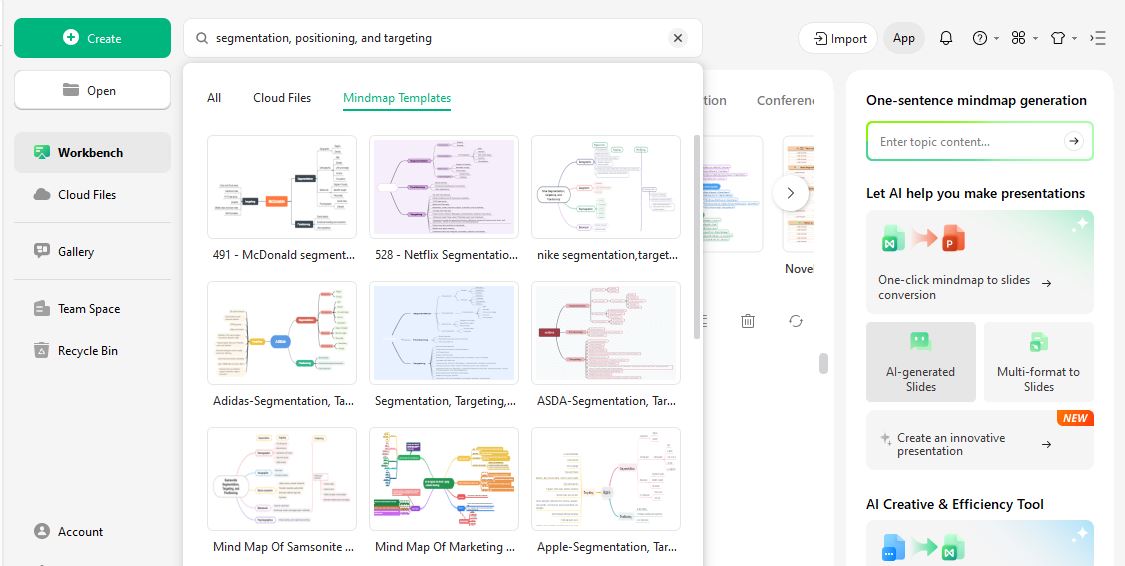
Create the Main Node
Label the central topic, such as "Adidas STP Strategy."
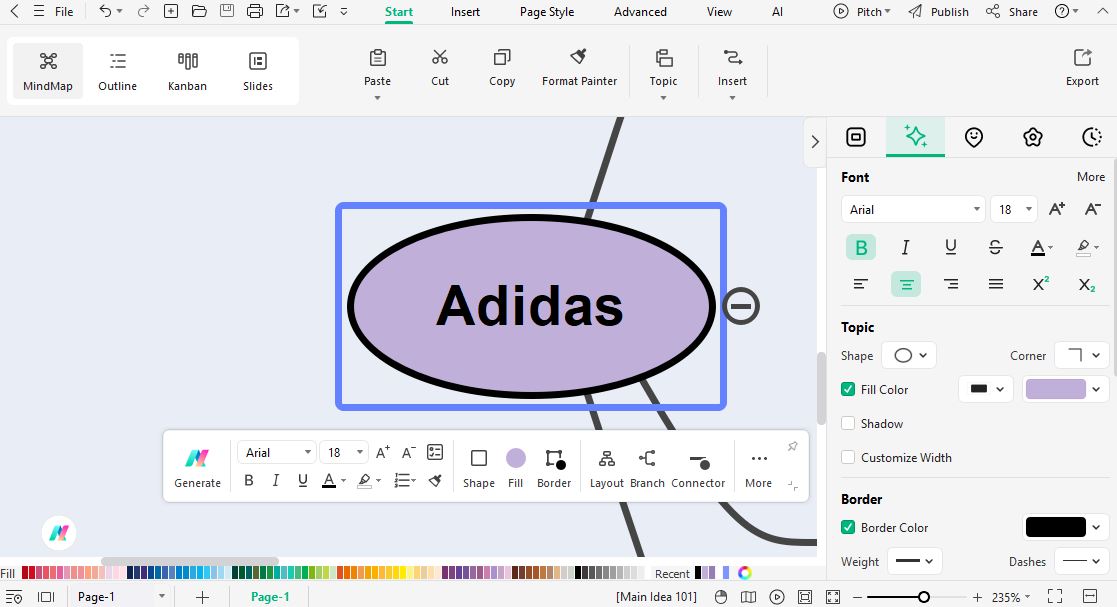
Add Subtopics
Branch out into "Segmentation," "Targeting," and "Positioning."
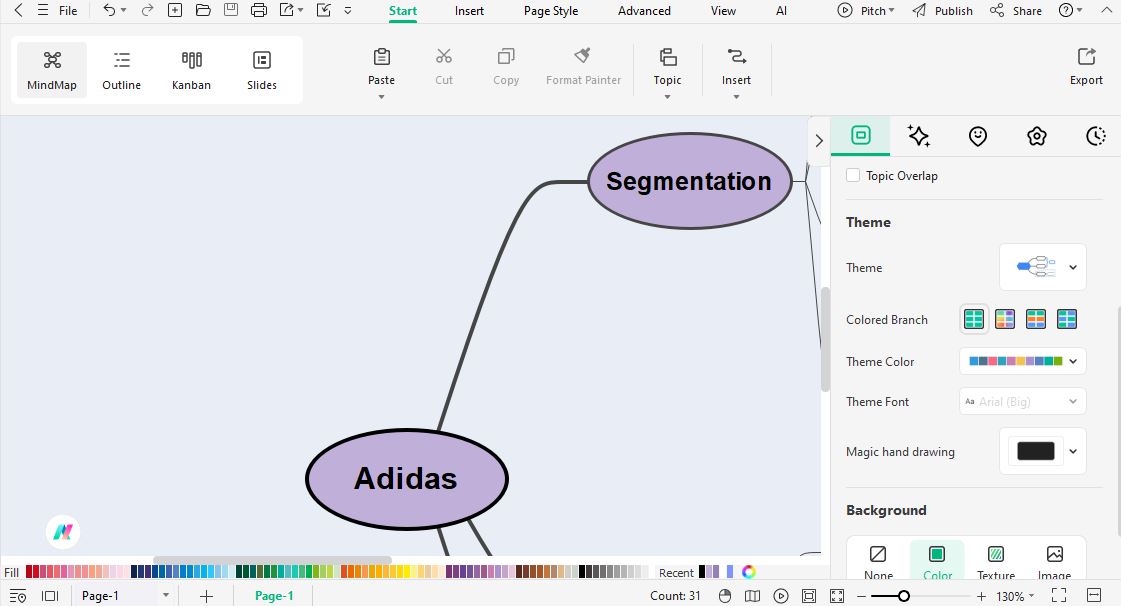
Expand Further
Under each category, include details like "Demographic Segmentation," "Performance & Innovation," etc.
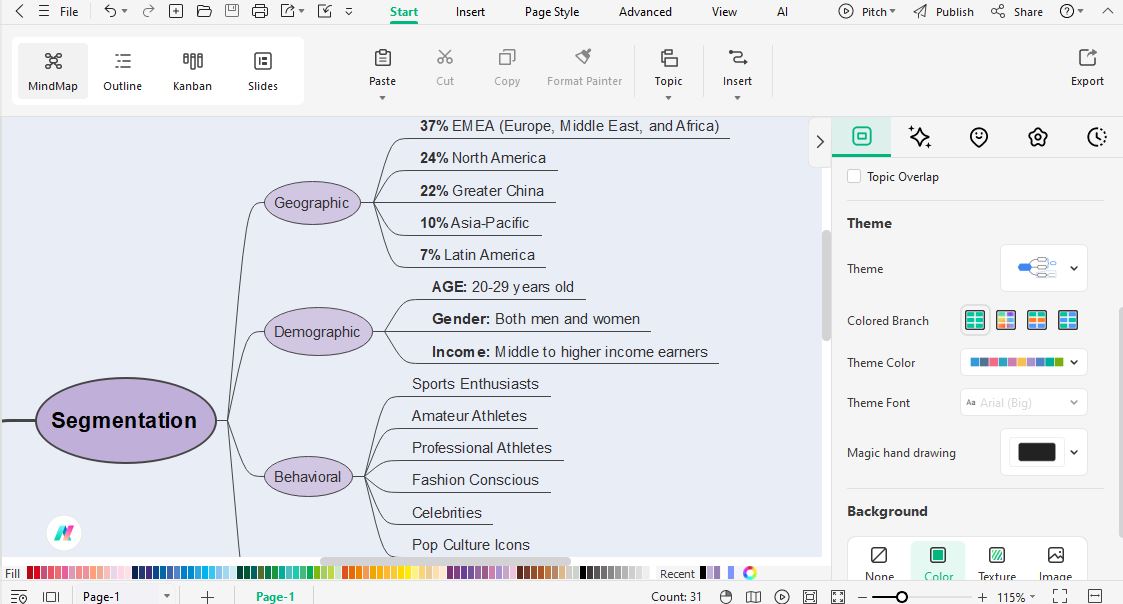
Customize Your Mind Map
Adjust colors, fonts, and layouts for a clear and visually appealing design.
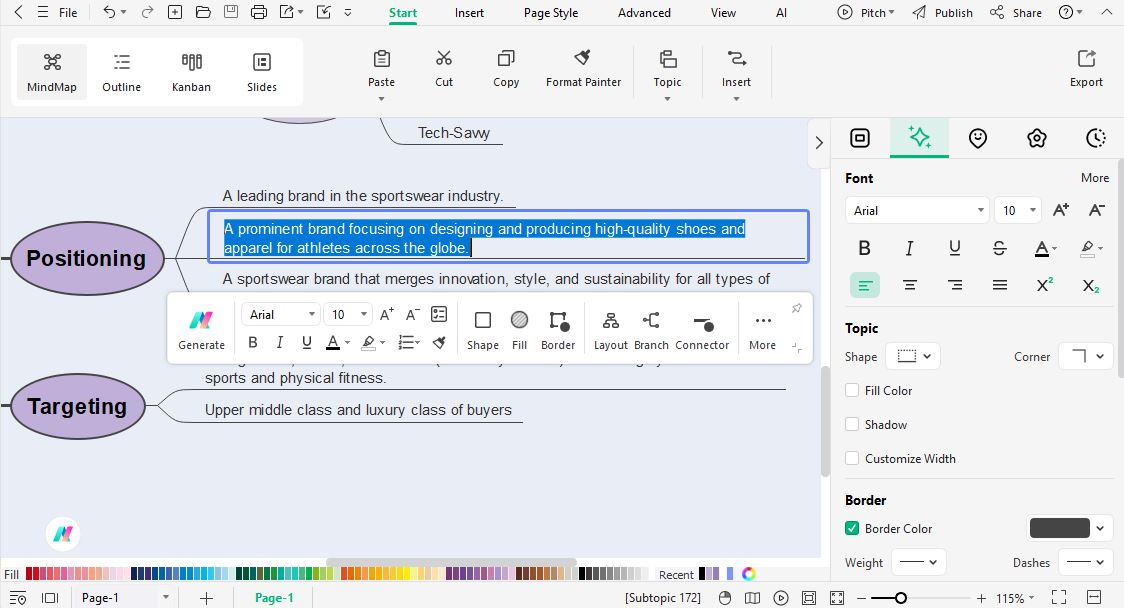
Save and Export
Once satisfied, save the file or export it as an image or PDF for sharing.
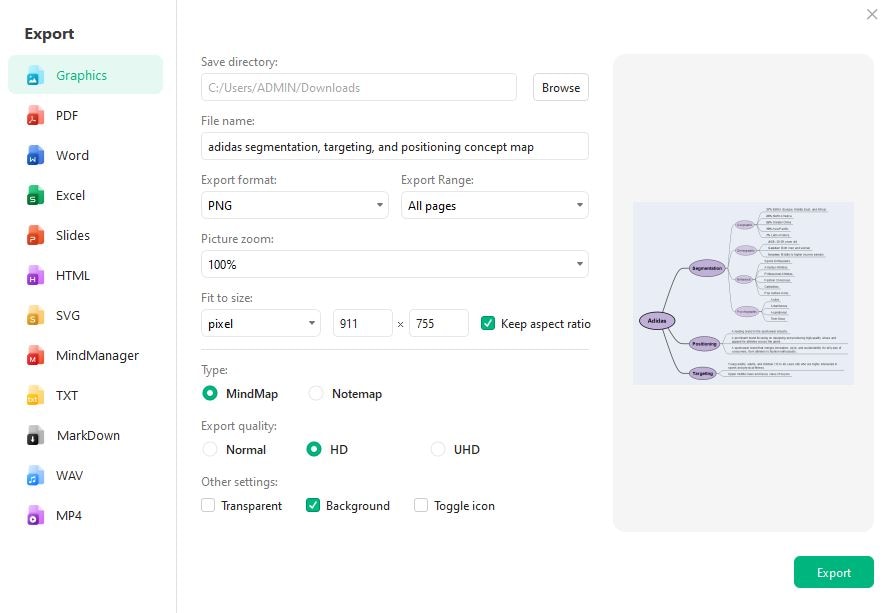
Learn More about EdrawMind
EdrawMind is more than just a mind-mapping tool; it’s helpful for brainstorming, planning, and presenting ideas. Its features, functions, and platforms are accessible to businesses, educators, and students.
Key Features
- Work Together in Real Time: EdrawMind lets multiple people edit the same mind map or chart at once.
- Ready-Made Templates: EdrawMind provides pre-designed templates that you can easily edit.
- Use on Any Device: EdrawMind works across different platforms (Windows PC, Mac, & Web version).
Pricing
Wondershare EdrawMind offers budget-friendly pricing options. With different plans available, users can choose one that best fits their needs without overspending.
Individual Plans
- Semi-Annual Plan: $39 for 6 months, includes all features, 1 GB of cloud storage, and free updates.
- Annual Plan: $59 per year, offering the same benefits as the semi-annual plan but for a longer period.
- Lifetime Plan: One-time payment of $118 for lifetime access, unlimited updates, and 10 GB of cloud storage.
Team and Business Plans
- Team Plan: $6.58 per user per month (billed annually), includes all individual plan features plus advanced support, easy setup, multi-user management, and bulk discounts.
Rating
EdrawMind holds a 4.6/5-star rating on G2, with users praising its ease of use and features.
Conclusion
A smart segmentation, targeting, and positioning (STP) strategy is what helps a brand connect with its audience. Adidas does this well by understanding its customers and offering products that fit their needs. This approach has kept Adidas at the top of the sportswear industry for years.
For businesses and marketers, there’s a lot to learn from Adidas’ strategy. And if you’re working on your marketing strategy, using mind maps can help you organize your ideas and make sense of your plan.



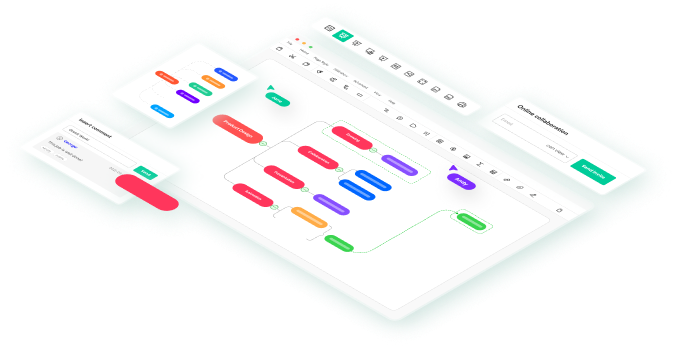
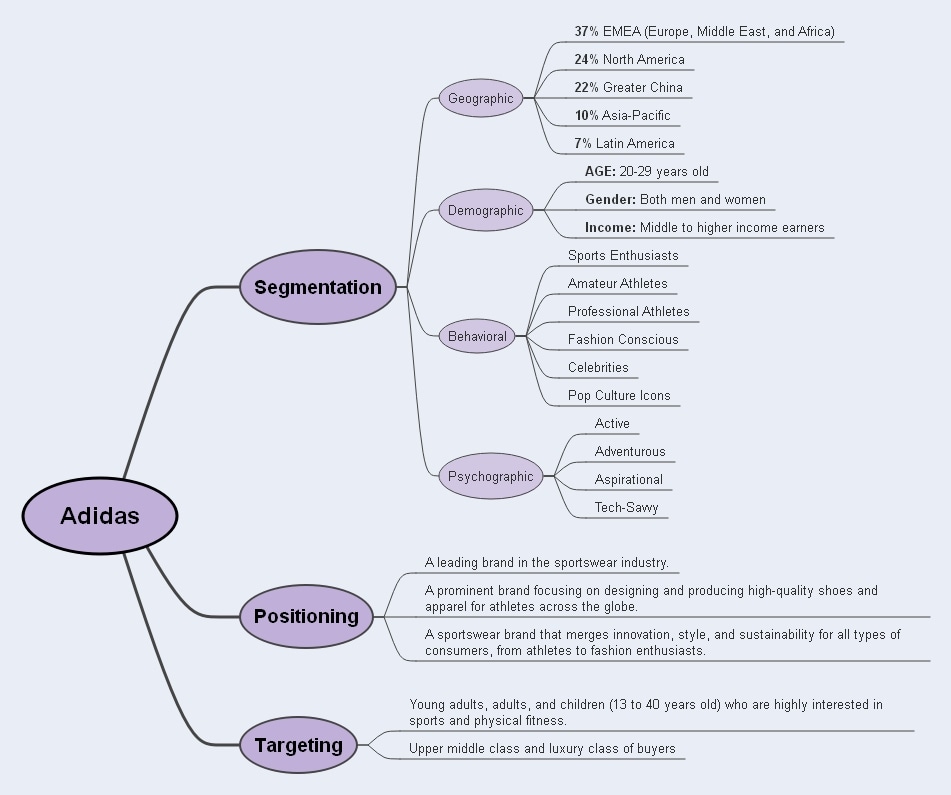
 below.
below.  below.
below. 

